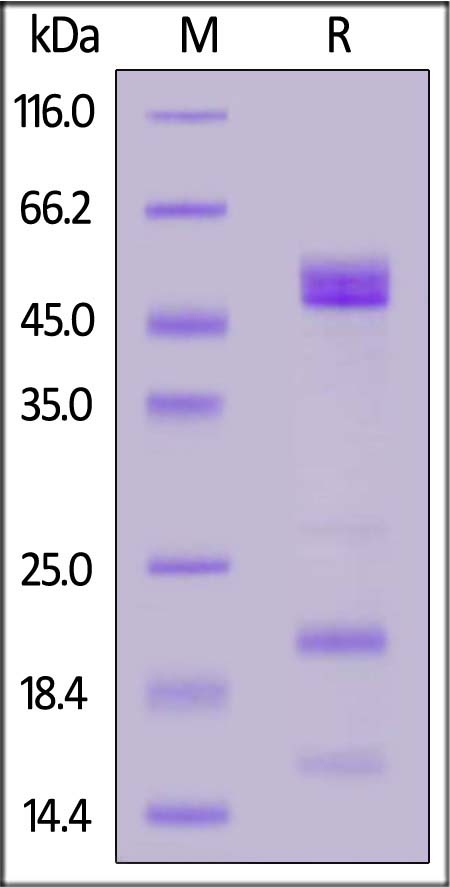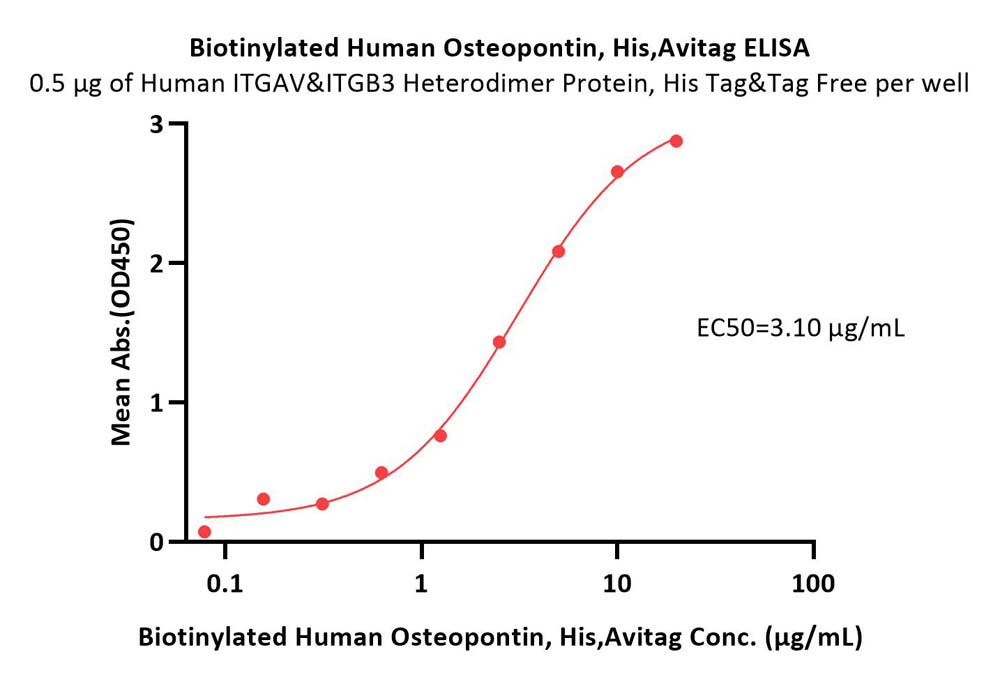Fibroblast growth factor 23 neutralizing antibody partially rescues bone loss and increases hematocrit in sickle cell disease miceXiao, He, Hurley
Sci Rep (2025) 15 (1), 10727
Abstract: Fibroblast Growth Factor 23 (FGF23) is increased in serum of humanized Sickle Cell Disease (SCD) mice. Since FGF23 is associated with impaired bone formation, we examined the effect of FGF23-neutralizing antibody (FGF23Ab) on bone loss in SCD mice. Healthy control (Ctrl) and SCD 5-months-old female mice were treated with FGF23Ab or isotype-specific IgG for 6 weeks. Significantly reduced hematocrit in SCD mice was increased by FGF23Ab. MicroCT of SCD femurs revealed no significant reduction in metaphyseal bone volume/total volume vs. Ctrl mice. However, histomorphometry of SCD femur revealed significantly reduced mineral apposition rate, bone formation rate, inter-label thickness, and osteoid surface, which were increased by FGF23Ab. Significantly increased osteoclast number/bone perimeter in SCD mice was reduced by FGF23Ab. Bone marrow stromal cells (BMSC) cultured in osteogenic media revealed significantly reduced mineralized nodules in SCD-IgG-BMSC that was increased in SCD-FGF23Ab-BMSC. FGF23 and αKlotho protein was significantly increased in SCD-IgG-BMSC and was not reduced by FGF23Ab. However, phosphorylated FGF Receptor-1, the receptor through which FGF23 signals, was significantly reduced by FGF23Ab. The mineralization inhibitor osteopontin was significantly increased in SCD-IgG-BMSC cultures and was reduced by FGF23Ab. We conclude that FGF23Ab may be efficacious in improving some parameters of reduced bone formation in female SCD mice.© 2025. The Author(s).
Electroconductive gelatin/hyaluronic acid/hydroxyapatite scaffolds for enhanced cell proliferation and osteogenic differentiation in bone tissue engineeringKasi, Serafin, O'Brien
et alBiomater Adv (2025) 173, 214286
Abstract: Addressing the challenge of bone tissue regeneration requires creating an optimal microenvironment that promotes both osteogenesis and angiogenesis. Electroconductive scaffolds have emerged as promising solutions for bone regeneration; however, existing conductive polymers often lack biofunctionality and biocompatibility. In this study, we synthesized poly(3,4-ethylenedioxythiophene) nanoparticles (PEDOT NPs) using chemical oxidation polymerization and incorporated them into gelatin/hyaluronic acid/hydroxyapatite (Gel:HA:HAp) scaffolds to develop Gel:HA:HAp:PEDOT-NP scaffolds. Morphological analysis by scanning electron microscopy (SEM) showed a honeycomb-like structure with pores of 228-250 μm in diameter. The addition of the synthesized PEDOT NPs increased the conductive capabilities of the scaffolds to 1 × 10-6 ± 1.3 × 10-7 S/cm. Biological assessment of PEDOT NP scaffolds using human foetal osteoblastic 1.19 cells (hFOB), and human bone marrow-derived mesenchymal stem cells (hBMSCs) revealed enhanced cell proliferation and viability compared to control scaffold without NPs, along with increased osteogenic differentiation, evidenced by higher levels of alkaline phosphatase activity, osteopontin (OPN), alkaline phosphatase (ALP), and osteocalcin (OCN) expression, as observed through immunofluorescence, and enhanced expression of osteogenic-related genes. The conductive scaffold shows interesting mineralization capacity, as shown by Alizarin red and Osteoimage staining. Furthermore, PEDOT-NP scaffolds promoted angiogenesis, as indicated by improved tube formation abilities of human umbilical vein endothelial cells (HUVECs), especially at the higher concentrations of NPs. Overall, our findings demonstrate that the integration of PEDOT NPs scaffold enhances their conductive properties and promotes cell proliferation, osteogenic differentiation, and angiogenesis. Gel:HA:HAp:PEDOT-NP scaffolds exhibit promising potential as efficient biomaterials for bone tissue regeneration, offering a potential engineered platform for clinical applications.Copyright © 2025 The Authors. Published by Elsevier B.V. All rights reserved.
Comparative Analysis of Salivary and Serum Inflammatory Mediator Profiles in Patients With Rheumatoid Arthritis and PeriodontitisFei, Eriksson, Fei
et alMediators Inflamm (2025) 2025, 7739833
Abstract: Background: Periodontitis (PD) and rheumatoid arthritis (RA) are chronic inflammatory conditions, characterized by dysregulated immune response and excessive production of inflammatory mediators. The oral disease PD is triggered by periodontal pathogens, leading to the destruction of tissues surrounding the teeth, whereas RA is a systemic autoimmune disease primarily affecting the joints. The objective of this study was to investigate the prevalence of PD and map the profile of salivary and serum inflammatory mediators of patients with RA, with respect to periodontal severity (PD stage II and PD stage III/IV). Methods: For this cross-sectional cohort study, 62 patients diagnosed with RA were recruited. All participants underwent a full-mouth dental examination. Levels of various inflammatory mediators, including tumor necrosis factor (TNF) superfamily proteins, interferon (IFN) family proteins, regulatory T cell (Treg) cytokines, and matrix metalloproteinases were determined in saliva and serum samples from each participant using a human inflammation multiplex immunoassay panel. Results: In the current RA cohort, all participants were diagnosed with PD, of which 35.5% were classified as PD stage II and 64.5% as PD stages III/IV. Inflammatory mediator levels were significantly higher in both saliva and serum samples from patients with RA and PD stages III/IV, compared to those with RA and stage II within the same cohort. These included higher serum levels of sCD30, IL-10, IL-19, osteopontin and elevated salivary levels of BAFF/TNFSF13B and IFN-α2. Additionally, APRIL/TNFSF13 levels were increased in both saliva and serum. Conclusions: Among the studied patients with RA, the majority exhibited severe PD (stage III/IV), underscoring the importance of periodontal prophylaxis and treatment for this group of patients. Higher levels of inflammatory mediators were observed in both saliva and serum in those with PD stages III/IV, suggesting a potential link between the severity of PD and systemic inflammation in RA. Further research is needed to explore the clinical implications of these findings.Copyright © 2025 Carina Fei et al. Mediators of Inflammation published by John Wiley & Sons Ltd.
Aberrant Expression and Oncogenic Activity of SPP1 in Hodgkin LymphomaNagel, Meyer
Biomedicines (2025) 13 (3)
Abstract: Background: Hodgkin lymphoma (HL) is a B-cell-derived malignancy and one of the most frequent types of lymphoma. The tumour cells typically exhibit multiple genomic alterations together with aberrantly activated signalling pathways, driven by paracrine and/or autocrine modes. SPP1 (alias osteopontin) is a cytokine acting as a signalling activator and has been connected with relapse in HL patients. To understand its pathogenic role, here, we investigated the mechanisms and function of deregulated SPP1 in HL. Methods: We screened public patient datasets and cell lines for aberrant SPP1 expression. HL cell lines were stimulated with SPP1 and subjected to siRNA-mediated knockdown. Gene and protein activities were analyzed by RQ-PCR, ELISA, Western blot, and immuno-cytology. Results: SPP1 expression was detected in 8.3% of classic HL patients and in HL cell line SUP-HD1, chosen to serve as an experimental model. The gene encoding SPP1 is located at chromosomal position 4q22 and is genomically amplified in SUP-HD1. Transcription factor binding site analysis revealed TALE and HOX factors as potential regulators. Consistent with this finding, we showed that aberrantly expressed PBX1 and HOXB9 mediate the transcriptional activation of SPP1. RNA-seq data and knockdown experiments indicated that SPP1 signals via integrin ITGB1 in SUP-HD1. Accordingly, SPP1 activated NFkB in addition to MAPK/ERK which in turn mediated the nuclear import of ETS2, activating oncogenic JUNB expression. Conclusions: SPP1 is aberrantly activated in HL cell line SUP-HD1 via genomic copy number gain and by homeodomain transcription factors PBX1 and HOXB9. SPP1-activated NFkB and MAPK merit further investigation as potential therapeutic targets in affected HL patients.


























































 膜杰作
膜杰作 Star Staining
Star Staining















